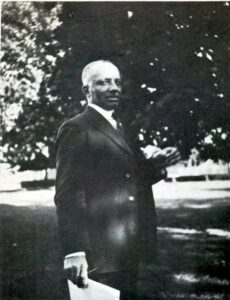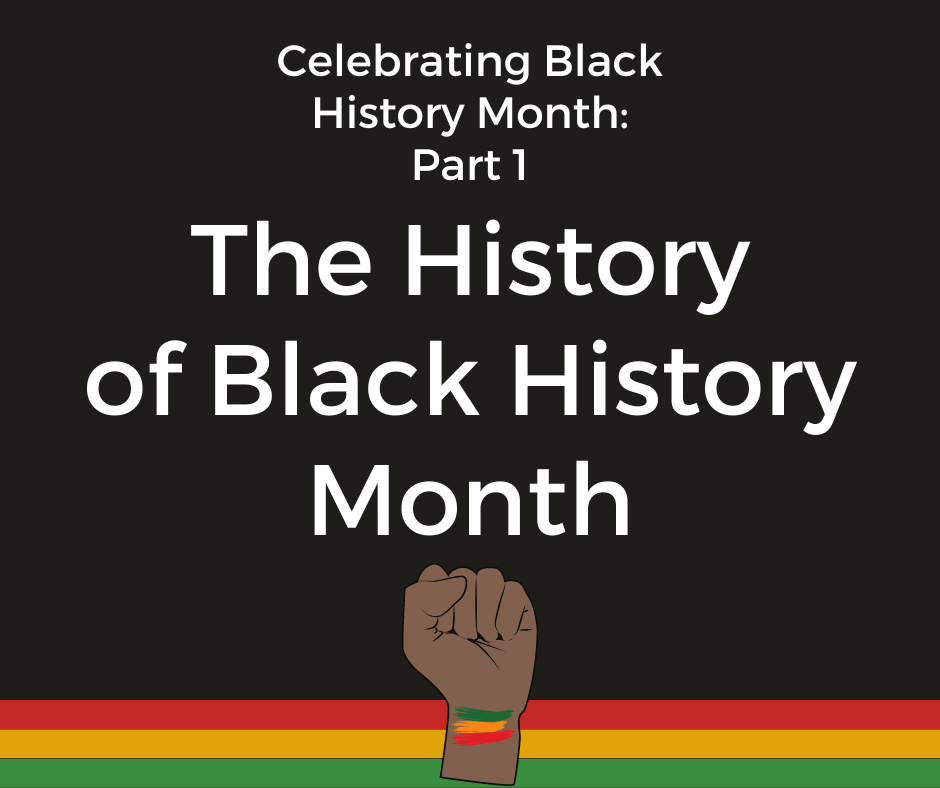Throughout the month of February, we are sharing posts written by Imagine Institute training program assistant Lourdes Flores about Black History Month. This series will follow the long history of Black History Month, Black History in the United States, and how we can all celebrate Black History Month in a way that is supportive, healthy, and, most importantly, empowering.
How Black History Month Began
Black History Month has a long history, beginning as a week in the 1920s. It was created by Carter G. Woodson with the intention of “going back to that beautiful history and it is going to inspire us to create greater achievements.”
Woodson announced Negro History Week in 1925 through the Association for the Study of African American Life and History (ASALH). The first week held in February was in 1926.
It was not until 1975, on the 50th anniversary of Black History Week, that it was nationally recognized through a resolution by President Gerald Ford. In 1986, Black History Month became nationally recognized by Congress.

Definitions of Black History Month’s Purpose
1. Black History Week was created by the ASALH to “commemorate the black past.” The ASALH website clarifies that the purpose is to”encourage the public to extend their study of black history.”
2. In the first recognition of Black History Week, President Ford said the purpose of the national recognition of the month week was to “recognize the important contribution made to our nation’s life and culture by Black citizens.”
3. After the U.S. Congress codified Black History Month as February of every year, President Ronald Reagan then proclaimed that “the foremost purpose of Black History Month is to make all Americans aware of this struggle for freedom and equal opportunity.” Many sources stop the purpose of Black History Month here, but during Presidential Proclamation 5433, President Reagan wrote that the month was a time to “celebrate the many achievements of African Americans in every field from science to the arts and politics and religion.”
4. Since 1996, presidents have issued proclamations on Black History Month, each year emphasizing a theme for the year and the achievements of Black women. You can read the 2024 Proclamation on National Black History Month here.

Black History is Monumental
We can use these varying definitions and see how, erroneously, the focus of Black History Month has sometimes changed to just be a moment of remembrance of struggle, and not the intentional purpose to use the month to commemorate the Black past, as Woodson intended.
If we take Black History Month as a moment to only talk about struggle, we negate the truth that Black American History is monumental to the advancement of human rights, equity, access to education, and more in the United States. Chiefly, if we take only a history of struggle, we are not celebrating, but rather commodifying generational trauma.
Black History is not only marked by struggle, but also by huge success, resilience, beauty, art, education, advancement of rights, and so much more.
To properly celebrate Black History Month, we must acknowledge history, but not in a way that appropriates pain. Rather we must celebrate the success of Black America, without negating that resilience is a source of pride. Doing that, we assume an anti-racist lens and can truly reflect on how formidable Black History is and showcase monumental historic moments without inherently assuming that Black History is only marked by struggle.
